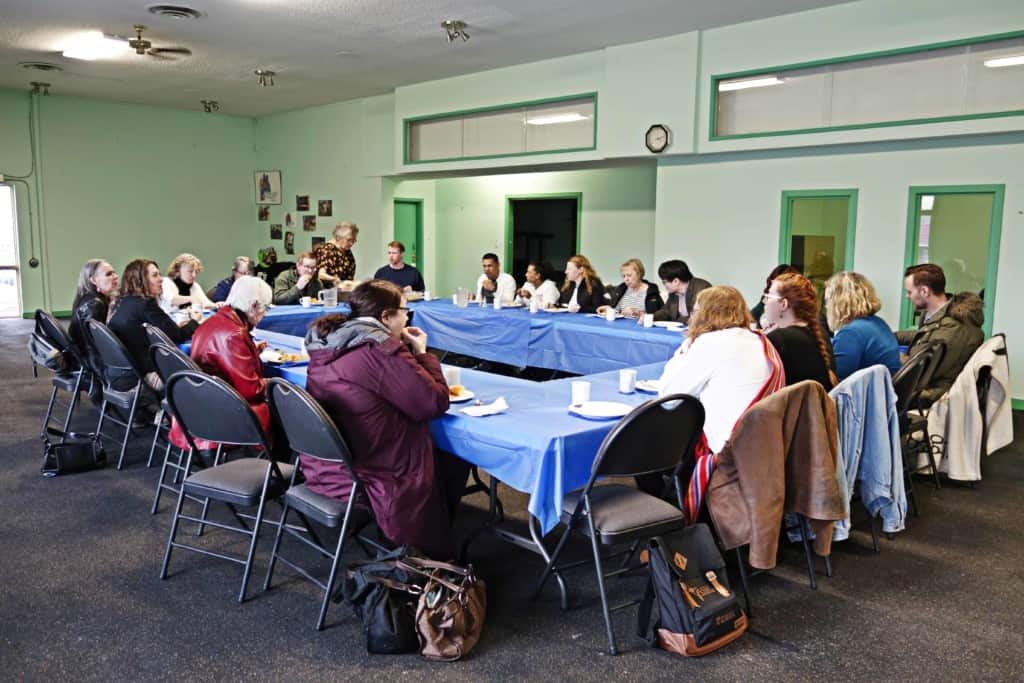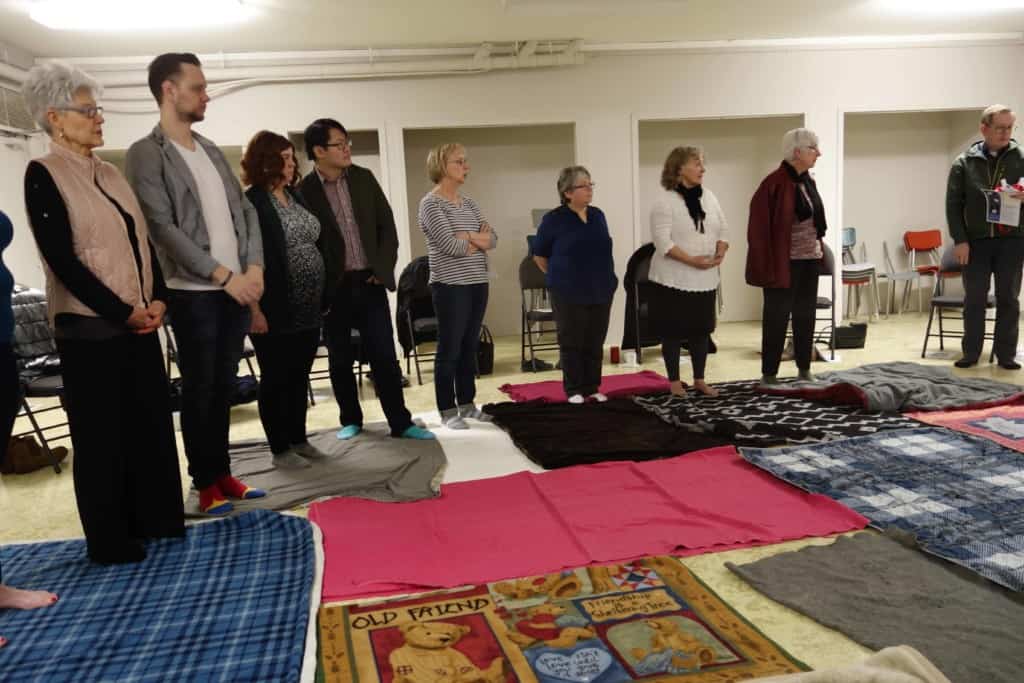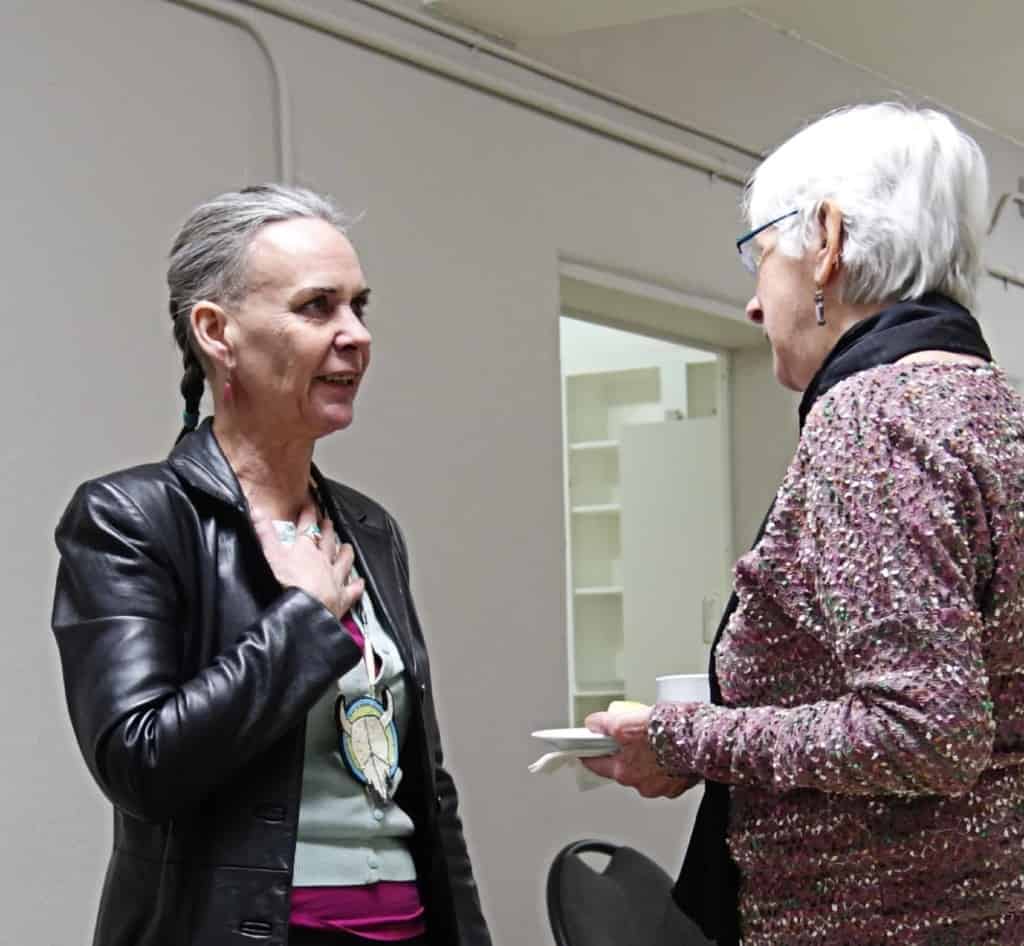Blanket exercise teaches Canada’s history
Many people grew up in ignorance of our dark settlement past
A blanket represents comfort, safety, and security. How brilliant then, that Indigenous elders, knowledge keepers, and educators chose it as a symbol of the land when they developed the blanket exercise workshop to teach Canada’s settlement history.
On Jan. 28, the RCP board hosted the workshop, followed by a traditional feast, at Eastwood Hall. Our policy manual states that all programs will be developed in keeping with the Truth and Reconciliation action plans. The blanket exercise was chosen as a leadership development initiative to help achieve this goal.
The paper’s distribution area in seven inner-city communities is home to one of the province’s highest urban Indigenous populations. Board members chose this interactive historical workshop to help staff and writers to better reflect our population in the stories we tell, and to advance reconciliation in our communities.

The workshop covered more than 500 years in 90 minutes and aimed to foster understanding about our shared history as Indigenous and non-Indigenous peoples.
Participants came into the circle holding a blanket they brought to represent the land. The facilitator instructed everyone to spread them side-by-side on the floor in the centre.

Métis facilitators, led by Lori Calkins, guided the process and assumed the role of European explorers and settlers. Cree knowledge keepers, Jennifer Saker and Doreen Wabasca, received the protocol bundle and opened the circle with prayer and a smudge, using tobacco and white sage. Their role was to acknowledge the sacredness of the learning circle through prayer, smudging, and offering silent support to power and intensify the experience.
Participants walked on a blanket and into the role of First Nations, Inuit, and Métis peoples. By reading scrolls and carrying cards that determined our outcome, participants walked through situations that included pre-contact, treaty-making, colonization, and resistance.
The exercise concluded with a talking circle and our group was encouraged to share from a feeling and knowledge perspective. Many people talked about the ignorance they had grown up with.

“I believed everything I was taught in school about my history, but none of what I learned today was ever on the curriculum,” said Muriel Wright, RCP board member.
Theresa Nielsen, a participant, said her family lived close by a reserve and she had no idea of the history or that children were being taken from their homes and placed into residential schools. “It’s overwhelming to think I spent my entire life within a few miles of a place where this outrage was happening and was oblivious to the reality.”
Calkins said, “When people ask, ‘Why can’t they just get over it?’ the answer is they can’t because it’s still happening. The National Inquiry into Missing and Murdered Women and Girls is now exposing another horrendous reality. The colonial principles are woven into the Indian Act; we face systemic barriers everyday. Reconciliation is a long and painful process. We don’t have to leave here today carrying a burden of guilt that isn’t ours. What we do need is to address racism when it surfaces in our families, communities, and institutions.”
CORRECTION
Jennifer Saker’s name was mistakenly Jessica Saker in the photo captions of this article. This has been corrected.
Featured Image: Knowledge keeper Jennifer Saker, second from the left, was part of the blanket exercise on Jan. 28. | Aydan Dunnigan-Vickruck







